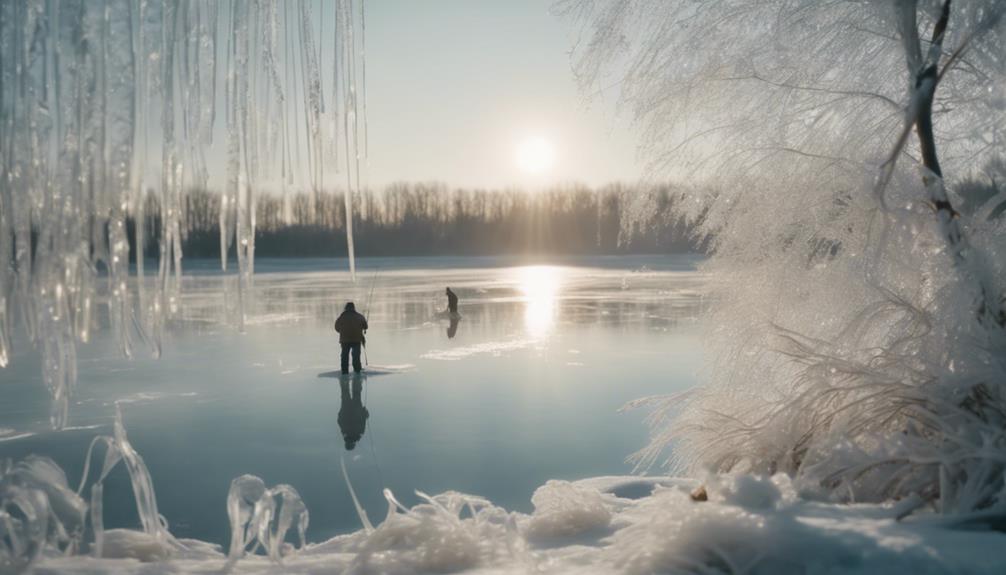Fishing is more than just a hobby; it’s a passion that connects people with nature. Whether you’re a seasoned angler or just starting, knowing how to find fish can significantly enhance your experience. In this blog post, we will explore effective strategies, techniques, and tools to help you successfully locate fish in various environments.
Understanding Fish Habitats: Where to Look
To efficiently learn how to find fish, it’s crucial to understand their habitats. Different species prefer different environments. Freshwater fish, for instance, are commonly found in lakes, rivers, and streams, while saltwater fish inhabit oceans and seas. Additionally, various factors such as water temperature, depth, and structures like rocks or vegetation influence fish behavior. Take time to research the specific types of fish you’re targeting and their preferred habitats. Lakes often have underwater structures like submerged trees or rocks, while rivers might have eddies or currents that attract fish.
Seasonal Considerations: Timing is Key
Another essential aspect of how to find fish is understanding seasonal behavior. Fish are cold-blooded creatures, which means their activity levels are highly influenced by temperature. In the spring, many species begin to spawn, making them easier to locate. Summer brings warmer waters, prompting fish to seek cooler, deeper areas. In the fall, fish often feed aggressively to prepare for winter. Winter fishing can be challenging, but targeting deeper waters or areas where fish congregate can yield great results. Always consider the season when planning your fishing trips.
Utilizing Technology: Tools for Success
In today’s digital age, technology plays a significant role in helping anglers find fish. Fish finders, for instance, use sonar technology to detect underwater structures and schools of fish. These devices can provide valuable information about water depth and temperature, making it easier for you to identify promising spots. Additionally, GPS technology can help you mark locations where you’ve had success, allowing you to return to those hotspots in the future. Mobile apps designed for fishing can also provide local fishing reports, weather forecasts, and tide charts, all of which are essential for successful fishing trips.
Bait and Lures: Attracting Fish Effectively
Understanding what bait or lures to use is a vital part of learning how to find fish. Different fish species are attracted to different types of bait. Live bait, such as worms or minnows, can be incredibly effective, especially for freshwater fish. Alternatively, artificial lures can mimic the movement and appearance of prey, enticing fish to bite. When choosing bait, consider the type of fish you’re targeting and the local environment. Experimenting with various bait types can help you determine what works best in your fishing area.
Reading Water: Spotting Fish in Their Environment
One of the most valuable skills an angler can develop is the ability to read water. Observing the water’s surface and understanding its characteristics can provide clues about where fish might be hiding. Look for areas with surface activity, such as jumping fish or birds diving, as these often indicate that fish are present. Additionally, currents, ripples, and changes in water color can signal the presence of fish. By learning to interpret these signs, you can increase your chances of finding fish in any body of water.
Fishing Techniques: Strategies for Success
When it comes to how to find fish, employing the right fishing techniques can make all the difference. Different techniques are suited to various environments and fish species. For instance, casting and retrieving lures is effective for targeting active fish, while bottom fishing may be more successful for bottom-dwelling species. Trolling can cover large areas of water and is often used in lakes and oceans. Understanding the behavior of your target fish and selecting the appropriate technique can lead to a more productive fishing expedition.
Local Knowledge: Learning from Experienced Anglers
One of the best resources for learning how to find fish is tapping into local knowledge. Experienced anglers often have valuable insights about specific fishing spots, techniques, and the best times to fish in the area. Joining local fishing clubs or participating in community fishing events can provide opportunities to connect with seasoned fishermen. Don’t hesitate to ask questions and share experiences; most anglers are more than happy to help newcomers learn the ropes.
Patience and Persistence: The Key to Successful Fishing
Finally, remember that fishing requires patience and persistence. It’s not uncommon to have days where the fish simply aren’t biting, no matter how skilled you are or how well you’ve prepared. The key is to stay positive, keep trying, and learn from each experience. Every fishing trip is an opportunity to understand the behaviors of fish better and refine your techniques. Over time, your knowledge and skills will grow, making it easier to find fish and enjoy the process.
Conclusion: Mastering the Art of Finding Fish
In conclusion, mastering how to find fish involves a combination of understanding fish habitats, seasonal behavior, utilizing technology, choosing the right bait, reading water conditions, employing appropriate techniques, leveraging local knowledge, and maintaining patience. By incorporating these strategies into your fishing trips, you’ll not only increase your chances of success but also enhance your overall fishing experience. Happy fishing!
